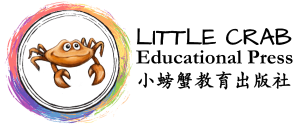
Reading Levels Made Simple: A Parent's Roadmap to Mandarin, English, and Bilingual Books
Share
As a parent or grandparent of a child learning to read Mandarin or English, if you’ve ever been to a bookstore or stared at a row of brightly coloured books, wondering which ones are suitable for your little learner, you’re not alone! We're here to break down the very confusing world of reading level indicators for both Chinese and English books. By the end of this post, you'll have a much clearer understanding of who these systems are meant for and what defines them, allowing you to make informed choices that support your child's literacy.
Chinese Reading Level Classification Indicators: A Primer
Here are seven reading level classification indicators for Mandarin books. We’re showing you how useful they are for parents based on their accessibility, their clarity in terms of whether they are likely to appear on book covers, and how common they are in retail settings versus educational settings. We’ve ranked them from least obscure to most obscure and included definitions for each:
1. Pinyin Reading Levels (拼音阅读等级)
Definition: This system categorizes texts based on the use of Pinyin alongside characters, focusing on the complexity of the vocabulary introduced.
Accessibility: Widely used for early readers, clearly marked in books, and accessible to parents. Can typically be found in both bookstores and educational settings.
2. Chinese Children's Book Reading Level Classification (儿童图书阅读等级分类)
Definition: This system categorizes books based on age and reading ability, focusing on vocabulary, sentence structure, and content appropriateness.
Accessibility: Useful for categorizing age-appropriate texts, but not always clearly labeled. Availability is variable; while some bookstores carry these titles, they are often more prevalent in school libraries.
3. Chinese Grade-Level Indicators (年级阅读水平)
Definition: Books are classified according to the expected reading skills for each school grade, aligning with curriculum standards.
Accessibility: Useful for parents to find books that align with school standards. However, these indicators are not always displayed prominently on covers. They are more commonly found in school libraries than in mainstream bookstores.
4. Hanyu Shuiping Kaoshi (HSK) Levels (汉语水平考试)
Definition: HSK is a standardized test for Mandarin proficiency, so HSK levels indicate the complexity of texts suitable for various proficiency levels.
Accessibility: Recognized among learners of Mandarin, but primarily serves as a proficiency assessment rather than a direct reading guide.
5. Chinese Proficiency Test (CPT) Levels (汉语水平测试)
Definition: Similar to HSK, this assessment focuses on practical language skills and can gauge reading materials for learners.
Accessibility: Used mainly for non-native speakers and less familiar to general readers. Accessibility is generally better for educators, and classifications may not be displayed on covers. Availability is typically limited to educational settings rather than general bookstores.
6. Literature Level Indicators (文学阅读水平)
Definition: Classifications specifically targeting literary texts, assessing them based on themes, language, and cultural context.
Accessibility: More specialized for literary texts, potentially less understood by parents focusing on general children's books.
7. Chinese Reading Scheme (汉语阅读方案)
Definition: A structured approach that provides a series of texts designed for learners at various levels, often accompanied by teaching materials.
Accessibility: Less widely recognized outside educational contexts, making it less accessible to parents. Availability is often limited to educational resources rather than typical bookstores.
Overall, the first four listed (Pinyin Reading Levels, Chinese Children's Book Reading Level Classifications and Chinese Grade-Level Indicators), and to a certain degree, HSK level indicators, are particularly useful and accessible for parents, while the others may offer less practical support in a retail context.
There Are So Many English Reading Level Assessment Indicators!
How about English books? Here’s a detailed comparison of eleven various reading level assessment tools, providing context on their accessibility for parents, their clarity in terms of whether they are likely to appear on book covers, and how common they are in retail settings versus educational settings:
1. Lexile Measure
Definition: A numerical scale that matches readers with texts based on their reading ability and the complexity of the text.
Accessibility: Highly accessible, often displayed on book covers, and widely found in bookstores and libraries.
2. Fountas & Pinnell Level
Definition: A leveling system that assesses books based on text complexity and comprehension, using lettered levels (A-Z).
Accessibility: Commonly used in schools, somewhat less visible in retail settings; clarity on covers varies.
3. Grade Level Equivalent
Definition: A classification indicating the grade level a book is appropriate for, based on expected literacy skills.
Accessibility: Familiar to parents and often found on book covers; however, clarity may vary, and it's primarily seen in educational settings. Dependent on the standards of grades in a given country so may not be interchangeable across all English speaking countries.
4. Accelerated Reader
Definition: A program that assesses student reading comprehension and assigns points based on book difficulty and quiz performance.
Accessibility: Less frequently displayed on covers; primarily used in schools, making it less accessible for retail shopping.
5. DRA (Developmental Reading Assessment)
Definition: An assessment tool that determines a student’s reading level through text comprehension and fluency.
Accessibility: Mainly used in educational settings, not commonly found in retail, and generally not displayed on covers.
6. Reading Recovery Level
Definition: An intervention program that assesses reading levels for early readers, focusing on developing literacy skills.
Accessibility: Primarily used in schools, not commonly visible in retail environments or on book covers.
7. Reading A-Z Levels
Definition: A leveling system that categorizes texts based on complexity, suitable for guided reading and classroom use.
Accessibility: Useful for educators, but less visible in retail settings; clarity on covers is not common.
8. Guided Reading Levels
Definition: A system that classifies books into levels to support small-group reading instruction.
Accessibility: Mostly used in classrooms; not commonly displayed on book covers, making it less accessible for parents in bookstores.
9. Scholastic Book Wizard
Definition: An online tool that allows users to search for books based on reading level, grade, and interests.
Accessibility: Useful as a reference tool, but not a classification system displayed on books; more applicable for educators.
10. Common Core State Standards
Definition: A set of U.S. educational standards for K-12 that includes reading expectations but does not classify individual books.
Accessibility: More of a framework than a direct resource for parents looking for specific books; not likely to appear on covers.
11. ATOS (Accelerated Reader Text Complexity)
Definition: A scoring system that assesses text complexity based on factors like vocabulary and sentence length.
Accessibility: Used mainly in educational settings, rarely found in retail, and typically not visible on book covers.
The Lexile Measure, Fountas & Pinnell Level, and Grade Level Equivalent are the top three for parents because those classifications provide clear enough, quantifiable measures of text complexity and reading ability, making it easier for them to select age-appropriate books for their children. With an awareness of these terms and their definitions, parents, guardians and grandparents alike can make informed decisions, ensuring their children have access to engaging and developmentally appropriate reading materials.
Making Sense of It All
That was a LOT of information! But hopefully when you can’t find a customer service worker in a store when you’re looking for Mandarin or English books, it will now be easier to gauge which books are right for your child yourself; if you know just one of the above indicators that your child’s reading level has been measured with, you can successfully research and find equivalent books that have been measured with other indicators. But what if you’re looking for bilingual books? Are there existing reading level classification indicators for those?
Turns out, there are! We’ll share them with you, but first…
Hot tip!
One point to note is that with the advent of tools like Chatgpt, finding a book’s reading level has never been easier!
Next time if you are standing in the store or shopping online, stuck while choosing between two books and want to know details as to their reading levels, you can now use AI like Chagpt to analyse them: Using the terms mentioned in this post for the ratings that matter to you, plus the title of the book, ask ChatGPT to assess the book for you and - boom! - you’ve got your info. So whether you want to check an all-Mandarin book, an all-English book, or a bilingual Mandarin-and-English book, you’ll know the terms with which to start off your search.
At LCEP, we have already added a drop-window of information to the product listings for each of our children’s books on our website so you can find this information out without having to research it yourself. We have posted information for the most useful indicators from all three of the above categories, and we threw in Canadian Grade Level for good measure!
Bilingual Mandarin-and-English Books
Here’s how each bilingual, Mandarin-and-English classification is ranked based on its accessibility and clarity for parents buying these kinds of books for their kids.
1. Dual Language Reading Levels
Definition: A classification system that categorizes books based on the reading level in both languages, focusing on vocabulary and sentence structure in Mandarin and English. Ranking: 1 - Highly useful for parents as it clearly indicates the reading level and is often marked on book covers.
2. Bilingual Book Series
Definition: Collections of books specifically designed for bilingual readers, usually featuring parallel texts or alternating languages. Ranking: 2 - Accessible and commonly found in retail settings. Series often have consistent branding that makes them easy to identify.
3. Common Core-aligned Bilingual Resources
Definition: Bilingual books that align with Common Core State Standards, ensuring that the content meets educational benchmarks. Ranking: 3 - Useful for parents who want to ensure educational alignment. However, these may not always be labeled clearly on book covers.
4. Language Development Stages
Definition: Frameworks that categorize books based on the developmental stages of language acquisition for bilingual children. Ranking: 4 - Useful but may not always be clearly indicated on book covers, making them less accessible in retail settings.
5. Educational Publishers’ Classifications
Definition: Classifications created by publishers that categorize bilingual books based on educational value and intended age group. Ranking: 5 - While useful, the clarity and visibility of these classifications can vary, and they may be more common in educational settings.
6. Language Proficiency Frameworks
Definition: Systems that classify books based on language proficiency levels, such as the CEFR or ACTFL guidelines, applicable to both languages. Ranking: 6 - Less accessible for parents as they may not directly appear on book covers and are more common in academic or educational contexts.
Choosing the Right Book(s), Made Easy
As you explore the vibrant realm of bilingual books, with our roadmap in hand you’re now equipped to navigate the colourful aisles of bookstores and confidently choose books that will ignite your child's imagination (and fuel their language learning efforts!). If you found this guide helpful, don’t miss out on our short, pinnable summary posts and inspirational quotes! Follow us on Pinterest and Instagram at @LittleCrabPress and search #SandysReadingLevelRoadmap for bite-sized wisdom that makes the learning journey even more fun! Join our community and let’s make reading a delightful experience for every child!
Happy Book Shopping!
